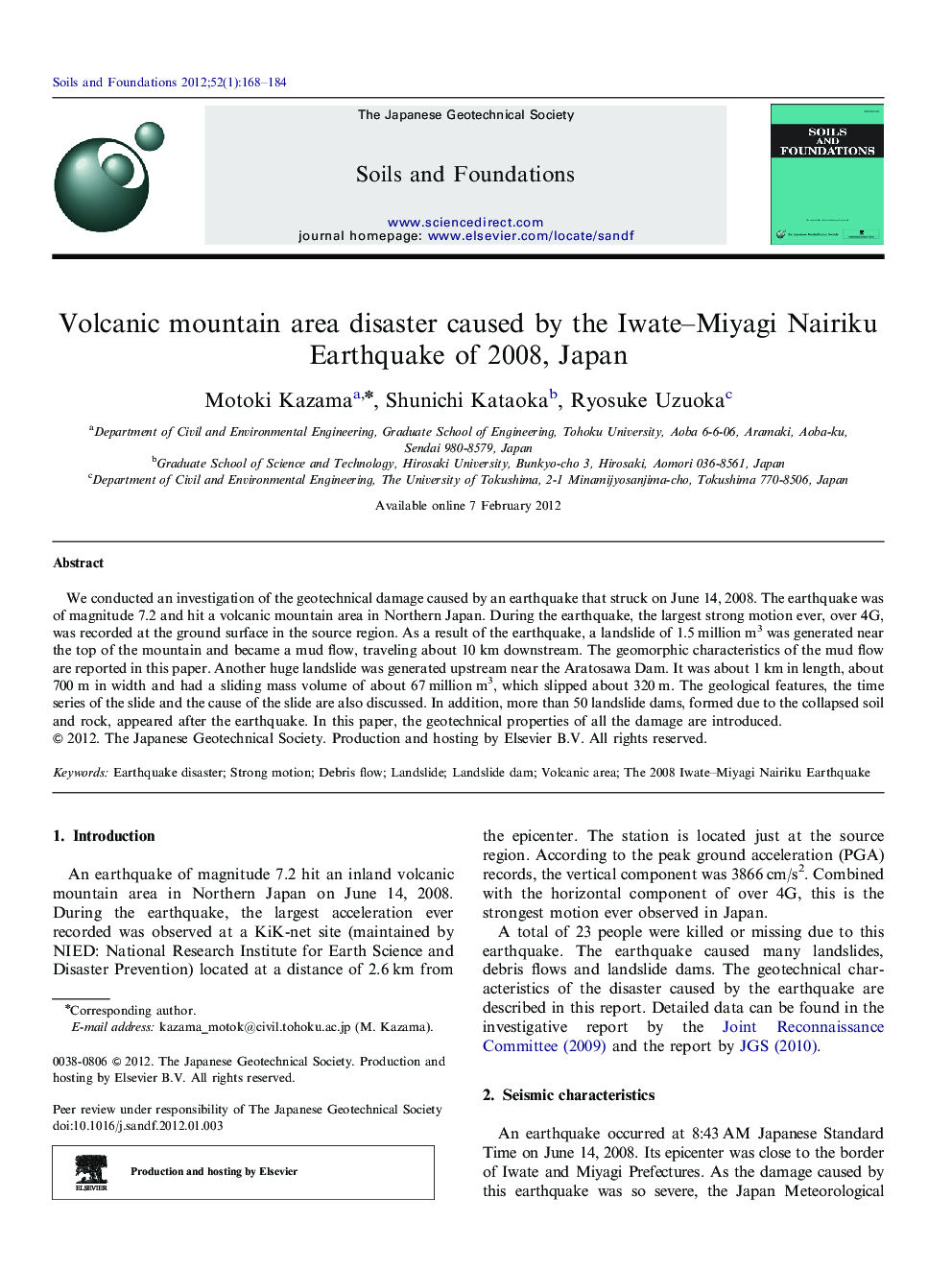| Article ID | Journal | Published Year | Pages | File Type |
|---|---|---|---|---|
| 307383 | Soils and Foundations | 2012 | 17 Pages |
We conducted an investigation of the geotechnical damage caused by an earthquake that struck on June 14, 2008. The earthquake was of magnitude 7.2 and hit a volcanic mountain area in Northern Japan. During the earthquake, the largest strong motion ever, over 4G, was recorded at the ground surface in the source region. As a result of the earthquake, a landslide of 1.5 million m3 was generated near the top of the mountain and became a mud flow, traveling about 10 km downstream. The geomorphic characteristics of the mud flow are reported in this paper. Another huge landslide was generated upstream near the Aratosawa Dam. It was about 1 km in length, about 700 m in width and had a sliding mass volume of about 67 million m3, which slipped about 320 m. The geological features, the time series of the slide and the cause of the slide are also discussed. In addition, more than 50 landslide dams, formed due to the collapsed soil and rock, appeared after the earthquake. In this paper, the geotechnical properties of all the damage are introduced.
